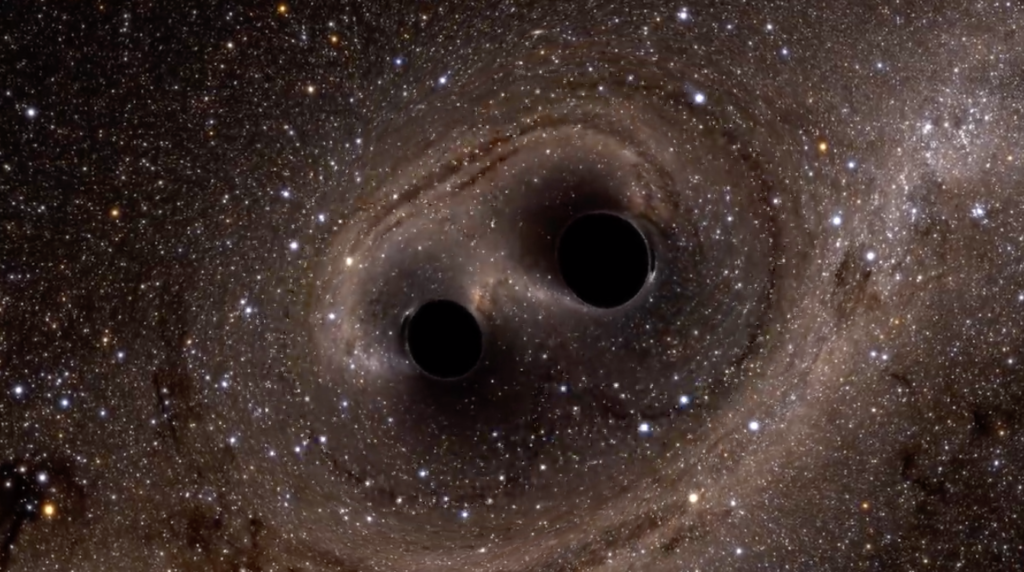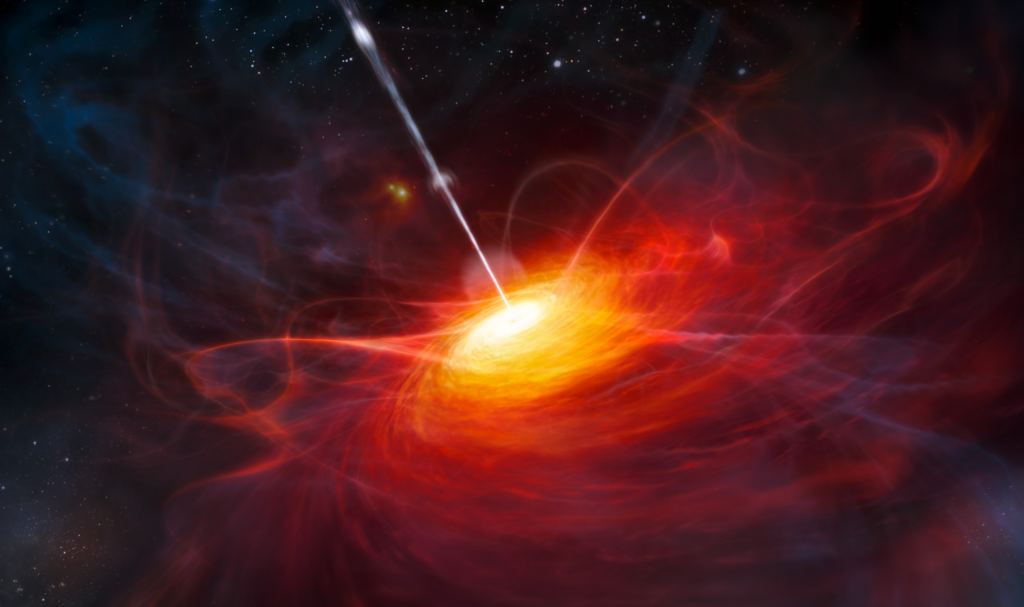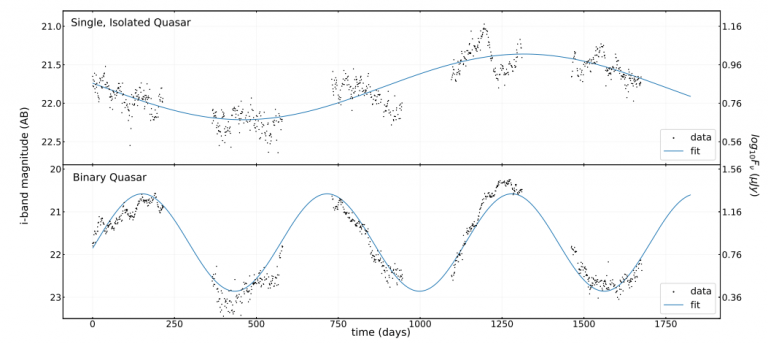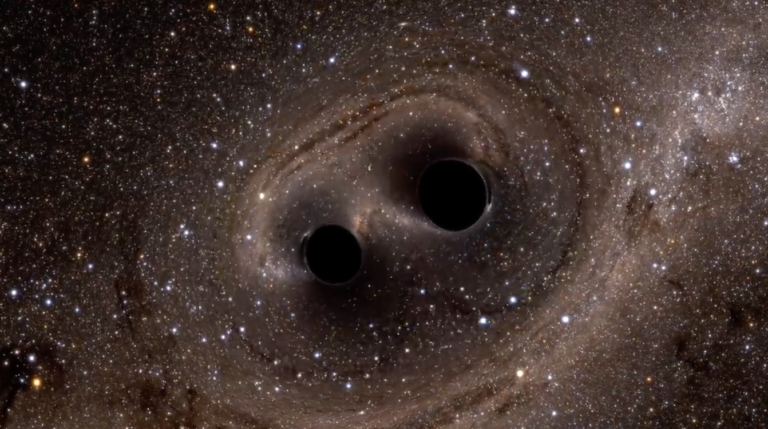Discovering Binary Supermassive Black Holes: The Method Unveiled by Vera Rubin.
When galaxies undergo mergers, the formation of binary black holes (BBHs) is anticipated. These closely orbiting BBHs, upon merging, generate gravitational waves, a phenomenon detected by LIGO-Virgo. The forthcoming Vera Rubin Observatory is poised to identify these binary systems prior to their merger, offering a unique perspective into the exploration of galaxy mergers, supermassive black holes, binary black holes, and gravitational waves.

According to current understanding, sizable galaxies, including our own, harbor a supermassive black hole (SMBH) at their cores. During galactic mergers, these SMBHs enter a close orbital relationship, evolving into a binary black hole (BBH). Ultimately, their merger results in the emission of powerful gravitational waves.
The Vera Rubin Observatory (VRO), through the Legacy Survey of Space and Time (LSST), will conduct an extensive, multi-year time-domain survey capturing repeated images of the sky to monitor changes. This survey, designed to detect phenomena ranging from asteroids to supernova explosions, is now revealed to possess the capability to identify binary black holes, adding another dimension to the VRO’s observational scope.

The recent paper, titled “Reliable Identification of Binary Supermassive Black Holes from Rubin Observatory Time-Domain Monitoring” has been submitted to The Astrophysical Journal and is presently in the pre-print stage. Megan Davis, affiliated with the Department of Physics at the University of Connecticut, serves as the lead author.
The authors elaborate on the utilization of periodic signatures in time-domain observations of quasars for the purpose of detecting binary supermassive black holes (BBHs). While these searches have yielded several hundred candidate BBHs, a significant challenge arises from the notably high rate of false positives, reaching up to 60%. This elevated false positive rate renders the data less useful. The question then becomes: Can researchers devise methods to reduce this rate to a more manageable level?
According to the authors, progress is underway. Quasars, a sub-class of active galactic nuclei (AGN) exhibiting greater luminosity than other AGN, pose a particular challenge. AGN refers to supermassive black holes (SMBHs) actively accreting material and emitting light. The issue lies in the variability of quasars as they accrete material, which masks the amplitude of a BBH, resulting in false positives. The authors note, “Binary amplitude is inaccurately estimated and poorly recovered for two-thirds of potential binaries due to quasar accretion variability.”

In contemporary astronomy, the emphasis is on data rather than observational skills. The researchers propose that addressing the issue of false positives hinges on leveraging data and computational approaches. In their paper, they state, “Rubin’s LSST, our most promising avenue for identifying binary SMBHs through electromagnetic observations, also propels us deeper into the era of big data, with a projected nightly output of over 20 terabytes.”
The substantial volume of data generated by the LSST necessitates the implementation of a triage system upon its arrival. Crafting an effective methodology for this data triage in the quest for binary black holes (BBHs) commences with simulations. The researchers undertook the simulation of millions of LSST Deep Field light curves for both single and binary quasars.
“Our objective is to generate realistic light curves of quasars, encompassing both isolated (single-SMBH) and binary systems, specifically tailored for Rubin’s LSST Deep Drilling Fields (DDFs),” articulate the researchers in their paper. DDFs, distinct from the extensive survey conducted by the VRO, involve intensive observations offering deeper coverage and more frequent temporal sampling.
Quasars, inherently intricate entities, become even more complex in binary configurations. Scientists posit that both isolated and binary quasars exhibit variable accretion disks. Binary quasars in close proximity possess a circumbinary accretion disk, while each individual SMBH maintains its own mini-disk, introducing further intricacy. The initial step in the authors’ research involves simulating realistic light curves for a diverse and representative range of the quasar population slated for observation by Rubin’s LSST.

The researchers generated over 3.6 million light curves from quasars using Rubin/LSST, with a significant portion dedicated to binary SMBHs. Despite thorough examination and fitting of these curves, the challenge of false positives persisted. The authors estimate conservatively that more than 40% of isolated, single quasars could lead to a false positive detection of a binary SMBH system through a simple sinusoidal fit.
Notably, the study found that massive and luminous quasars are more prone to being false positives rather than genuine binaries. The authors caution against relying on sinusoidal fits for binary SMBH detection and underscore the need for careful consideration in this regard.
Distinguishing between quasars and BBHs presents a formidable challenge, as nature does not provide distinct signals. Nevertheless, the research sheds light on the types of quasar light curves most likely to yield false positives, a significant stride in addressing the issue. While the researchers managed to reduce some false positives from around 60% to approximately 40%, acknowledging that more work is required.
The paper’s primary objective was to explore the detectability of binary SMBHs within a representative quasar population in Rubin/LSST DDF observations. The subsequent phase involves utilizing light curves derived not from simulations but from the observed quasar population. Additionally, gravitational wave searches related to binary SMBHs will be integrated into the ongoing efforts.
The study highlights an alternative approach to fitting light curve data, known as DRW (Damped Random Walk), which is computationally efficient. The researchers intend to reassess their analysis using DRW fits in the future, aiming for a more effective triage of false positives.
While the LSST’s ten-year duration is anticipated to unveil between 20 million and 100 million active galactic nuclei, identifying BBHs within this extensive dataset poses a monumental challenge. Although the researchers haven’t fully resolved the dual challenge of handling vast amounts of data and mitigating false positives, they acknowledge progress in addressing these complex issues.
Do not forget to share your opinion with us to provide you with the best posts !





0 Comments